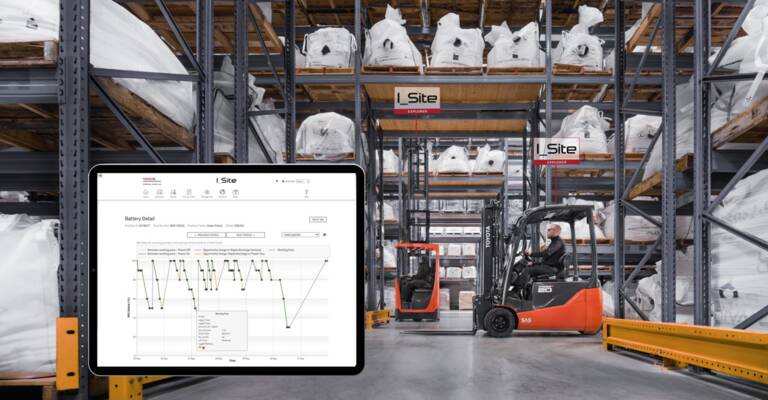Run your fleet for less, part 1: How to make batteries last longer

Save batteries, save money
A fleet manager’s responsibility concerns not only vehicles, but also batteries. Though often overlooked, batteries account for a significant chunk of your budget. Proper forklift battery management will prolong battery lifetimes, avoiding the cost of buying extra batteries during the contract period.
Want to extend the service life of your forklift batteries? First, you need to know two things: how your batteries are being charged, and whether the type of battery suits your operation.
Answering these questions can be harder than you think. That’s why we developed Toyota I_Site with the Explorer package, which gives you instant access to a host of useful battery data via the I_Site portal.
How/when are your batteries charged?
In practice, it is almost impossible to monitor how and when all batteries are charged. But with I_Site, you can view charge/discharge cycle data for each truck battery. This will quickly flag up inefficient battery handling, allowing you to take measures when needed, such as offering extra training on battery management to your forklift operators.
Monitoring battery usage at fleet level will also help you improve energy efficiency.
Are you using the right type of battery?
Our fleet management system automatically detects the battery technology used. The Explorer package can also help you select the right battery type for your operations: lead-acid or lithium-ion.
How to get the best out of your batteries?
Battery management best practice varies widely depending on the type of battery.
If using lead-acid batteries:
Lead-acid batteries should be charged when they reach 20% discharge. This will keep the battery life expectancy at five years or more. The life expectancy is affected by the charging frequency. If the battery is frequently charged for short periods before it reaches 20% – something known as opportunity charging – the battery lifetime will decrease drastically, and you will need to buy an extra battery much sooner.
If using lithium-ion batteries:
Lithium-ion batteries are more flexible when it comes to charging. Unlike lead-acid batteries, the life expectancy of a lithium-ion battery is not affected by charging frequency. In fact, opportunity charging is encouraged to maintain the uptime of your operation. Using I_Site Explorer will enable you to check that your batteries are always fully charged when the trucks are idle. Doing this will ensure you don’t end up having to charge when the truck is needed, wasting valuable production time.
With the right type of battery, charged optimally, you can use your trucks to full capacity while saving energy and costs. It’s a win-win.
